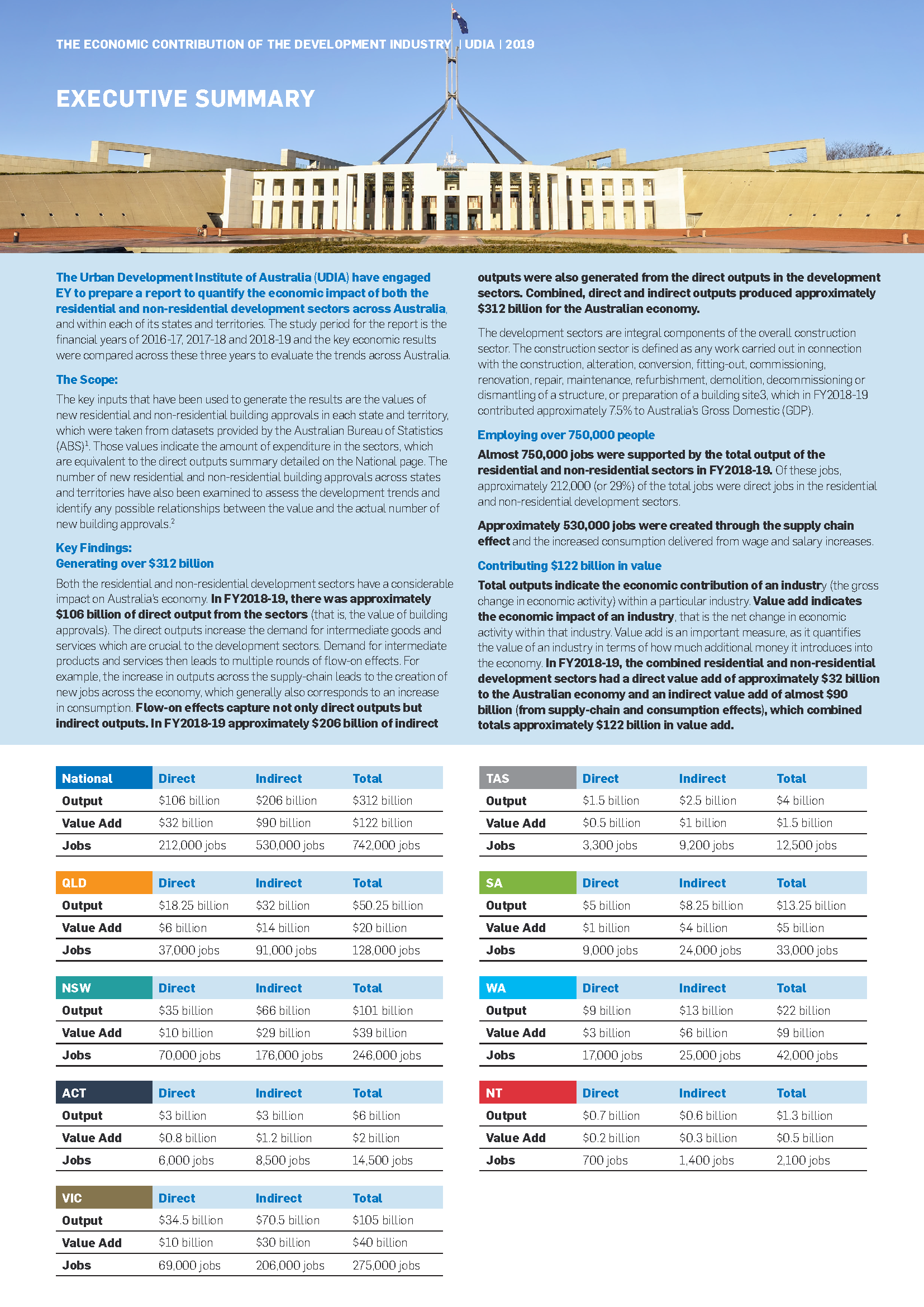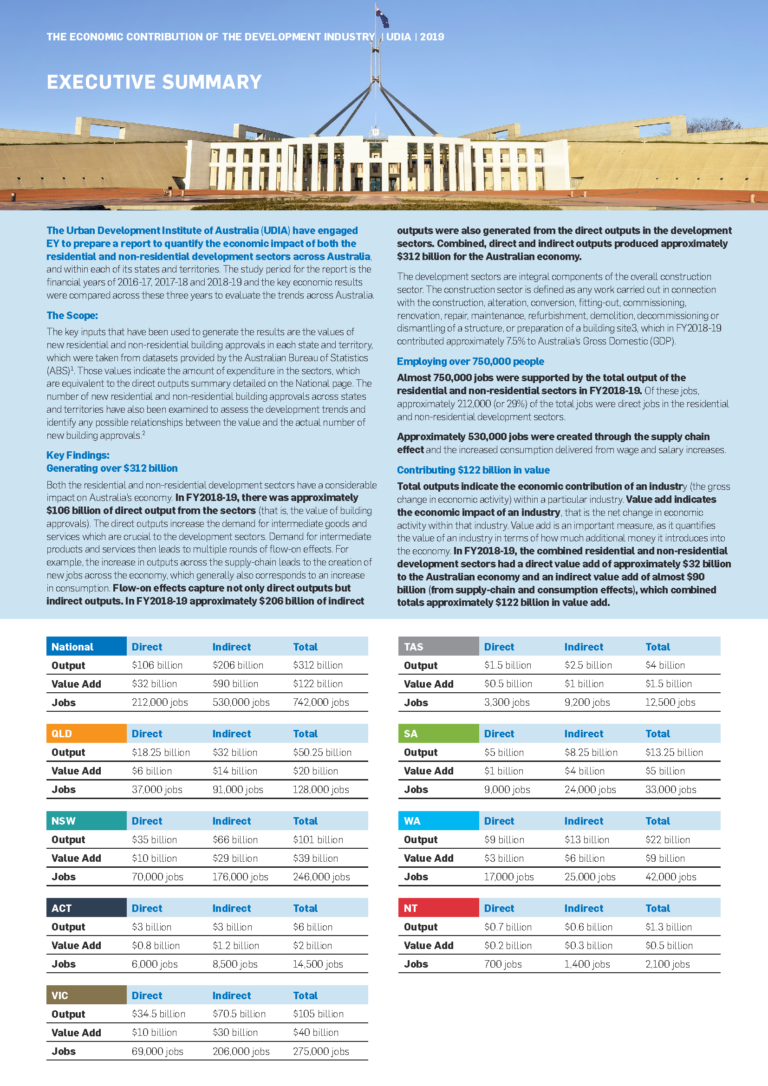The Urban Development Institute of Australia (UDIA) have engaged EY to prepare a report to quantify the economic impact of both the residential and non-residential development sectors across Australia, and within each of its states and territories. The study period for the report is the financial years of 2016-17, 2017-18 and 2018-19 and the key economic results were compared across these three years to evaluate the trends across Australia.
Generating over $312 billion
Both the residential and non-residential development sectors have a considerable impact on Australia’s economy. In FY2018-19, there was approximately $106 billion of direct output from the sectors (that is, the value of building approvals). The direct outputs increase the demand for intermediate goods and services which are crucial to the development sectors. Demand for intermediate products and services then leads to multiple rounds of flow-on effects. For example, the increase in outputs across the supply-chain leads to the creation of new jobs across the economy, which generally also corresponds to an increase in consumption. Flow-on effects capture not only direct outputs but indirect outputs. In FY2018-19 approximately $206 billion of indirect outputs were also generated from the direct outputs in the development sectors. Combined, direct and indirect outputs produced approximately $312 billion for the Australian economy.
The development sectors are integral components of the overall construction sector. The construction sector is defined as any work carried out in connection with the construction, alteration, conversion, fitting-out, commissioning, renovation, repair, maintenance, refurbishment, demolition, decommissioning or dismantling of a structure, or preparation of a building site3, which in FY2018-19 contributed approximately 7.5% to Australia’s Gross Domestic (GDP).
Employing over 750,000 people
Almost 750,000 jobs were supported by the total output of the residential and non-residential sectors in FY2018-19. Of these jobs, approximately 212,000 (or 29%) of the total jobs were direct jobs in the residential and non-residential development sectors.
Approximately 530,000 jobs were created through the supply chain effect and the increased consumption delivered from wage and salary increases.
Contributing $122 billion in value
Total outputs indicate the economic contribution of an industry (the gross change in economic activity) within a particular industry. Value add indicates the economic impact of an industry, that is the net change in economic activity within that industry. Value add is an important measure, as it quantifies the value of an industry in terms of how much additional money it introduces into the economy. In FY2018-19, the combined residential and non-residential development sectors had a direct value add of approximately $32 billion to the Australian economy and an indirect value add of almost $90 billion (from supply-chain and consumption effects), which combined totals approximately $122 billion in value add.


